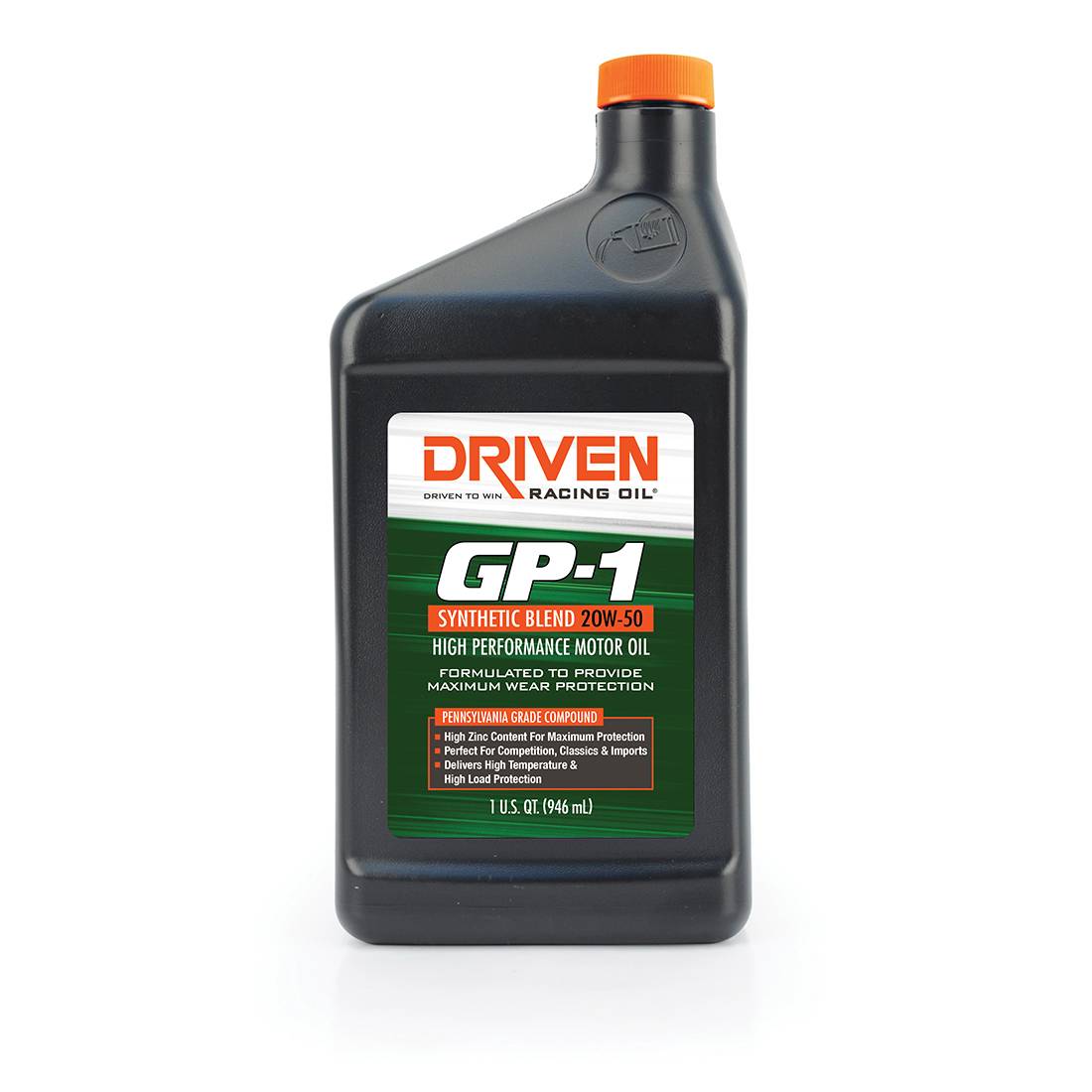Engine Masters on MotorTrend did a test of engine oil viscosity using Driven GP-1 in 5W-20 and 20W-50. The test engine was a marine 454 BBC with a stock bottom end and quite a bit of age on it. They were mostly looking at the differences in viscosity and pressure at different temperatures, mainly 40°C (100°F) and 100°C (212°F), and there wasn't anything spectacular there. The 5W-20 ran ~10 psi lower than the 20W-50 across the pull. What was interesting was the power.
When cold (40°C), the 5W-20 made more power than the 20W-50. When hot (100°C), the 20W-50 made more power than the 5W-20. The reason for that is the engine in use. It's a rather worn engine with thick 5/64", 5/64", 3/16" high tension rings with likely a less than stellar hone profile. This is the reason for the slight bump in power with the 20W-50 over the 5W-20 when hot is the higher viscosity is helping ring seal.
Everyone who knows me and my passion in lubricants knows I'm a proponent of lower viscosity. Lower viscosity will make more power up until the point that ring seal becomes compromised, and that is what happened here. I wish they would've done more with the episode. I think if they'd put in GP-1 10W-30, they would've found more power than both 5W-20 and 20W-50 at 212°F.
Something else to note is that GP-1 uses majority ARG group I base oil which has a much higher pressure-viscosity coefficient when cold that falls substantially as the oil gets hot. Group III and IV synthetic base oils have a higher P-V coef pretty much everywhere above ~160°F so running this same test with something like Amsoil Dominator 5W-20 vs 15W-50 or even a shelf oil like Mobil 1 5W-20 vs 15W-50 could potentially not have the ring seal issue.
There's a ton of variables at play here which is why I'm laying this out. I don't want people to look at this and say "Oh, higher viscosity makes more power" because >95% of the time, that won't be the case. They acknowledged that in the video as well. This is one of those exceptions where that wasn't the case due to it being an old, worn out engine.
If you have Motortrend on Demand, hop over there and watch the episode.

When cold (40°C), the 5W-20 made more power than the 20W-50. When hot (100°C), the 20W-50 made more power than the 5W-20. The reason for that is the engine in use. It's a rather worn engine with thick 5/64", 5/64", 3/16" high tension rings with likely a less than stellar hone profile. This is the reason for the slight bump in power with the 20W-50 over the 5W-20 when hot is the higher viscosity is helping ring seal.
Everyone who knows me and my passion in lubricants knows I'm a proponent of lower viscosity. Lower viscosity will make more power up until the point that ring seal becomes compromised, and that is what happened here. I wish they would've done more with the episode. I think if they'd put in GP-1 10W-30, they would've found more power than both 5W-20 and 20W-50 at 212°F.
Something else to note is that GP-1 uses majority ARG group I base oil which has a much higher pressure-viscosity coefficient when cold that falls substantially as the oil gets hot. Group III and IV synthetic base oils have a higher P-V coef pretty much everywhere above ~160°F so running this same test with something like Amsoil Dominator 5W-20 vs 15W-50 or even a shelf oil like Mobil 1 5W-20 vs 15W-50 could potentially not have the ring seal issue.
There's a ton of variables at play here which is why I'm laying this out. I don't want people to look at this and say "Oh, higher viscosity makes more power" because >95% of the time, that won't be the case. They acknowledged that in the video as well. This is one of those exceptions where that wasn't the case due to it being an old, worn out engine.
If you have Motortrend on Demand, hop over there and watch the episode.


